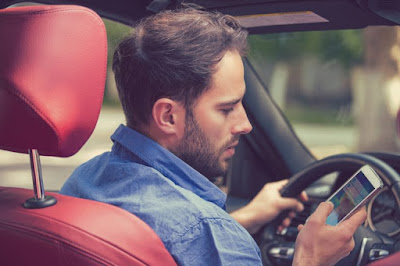The use of AI cameras to detect phone usage in cars is an emerging technology that aims to address the issue of distracted driving. These cameras are designed to monitor and analyze driver behavior, specifically focusing on detecting when drivers are using their mobile phones while operating a vehicle.
AI-based camera systems utilize computer vision and machine learning algorithms to analyze real-time video footage and identify signs of distracted driving, such as drivers holding and using their phones while driving. These systems can distinguish between different activities, like making a phone call, texting, or using social media, and can trigger alerts or notifications when a violation is detected.
The deployment and use of AI cameras for detecting phone usage in cars can vary depending on local laws and regulations. Some jurisdictions have implemented or are considering implementing these systems as a means of improving road safety and enforcing distracted driving laws. However, it's important to note that the implementation and acceptance of such technologies can differ between regions, and privacy concerns may also be a factor to consider.
As with any emerging technology, it is advisable to refer to local laws, regulations, and official sources in your jurisdiction to understand the current status and legality of using AI cameras to detect phone usage in cars. Additionally, monitoring developments in this field and staying informed about the latest advancements can provide a more accurate understanding of how this technology is being utilized.
Australia put up the first phone-detecting cameras in New South Wales over the weekend. The move is part of a broader plan to reduce roadway fatalities by 30 percent by 2021 — especially as new technologies continue to exacerbate the issue of distracted driving. “It’s a system to change the culture,” NSW Police Assistant Commissioner Michael Corboy told Australian media las week.
New South Wales wants to put up 45 portable cameras over the next three years, moving them occasionally to keep people on their toes. For the first three months, starting now, offending drivers will only receive warning letters in the mail. The penalty then becomes a $344 AUD ($233 USD), which gets a bit higher in school zones, and some points on their license (again, more in a school zone). Minister for Regional Roads Paul Toole said the program will progressively expand to perform an estimated 135 million vehicle checks on NSW roads each year by 2023.
Critics of the plan are worried that the cameras sacrifice privacy for negligible safety gains. There have also been fears that the courts could become overwhelmed by drivers disputing bogus claims if the system isn’t spot on with its detection.
While numerous outlets are calling this a world’s first, the Netherlands recently put a similar system in place to catch distracted drivers. China also has a system like this (a rather expansive one) and intends on connecting it to its social credit score program early next year.
“The NSW Government is serious about reducing our state’s road toll and rolling out mobile phone detection cameras is another way we will do this,” explained Minister for Roads Andrew Constance. “As we enter a notoriously dangerous time of the year on our roads I want all drivers to know that if you use your mobile phone while behind the wheel of a vehicle in NSW you will have a greater
chance of being caught, anywhere at anytime … Some people have not got the message about using their phones legally and safely. If they think they can continue to put the safety of themselves, their passengers and the community at risk without consequence they are in for a rude shock.”

